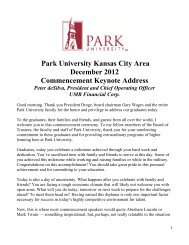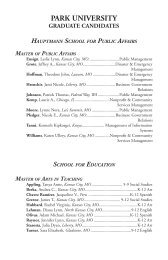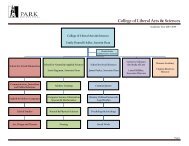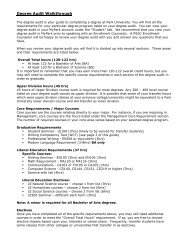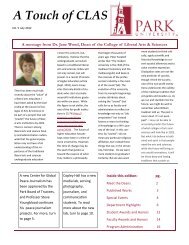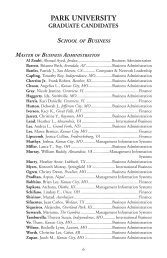How to Write a Radio Serial Drama for Social Development- PDF
How to Write a Radio Serial Drama for Social Development- PDF
How to Write a Radio Serial Drama for Social Development- PDF
Create successful ePaper yourself
Turn your PDF publications into a flip-book with our unique Google optimized e-Paper software.
Chapter Eleven: Script Presentation 159<br />
Setting Out Each Script Page<br />
Each page in the script should be set out as demonstrated on the sample<br />
script of Cut Your Coat According <strong>to</strong> Your Cloth.<br />
❶<br />
❷<br />
❸<br />
❹<br />
Page header. Each page of every script must have a page header giving<br />
the series’ title, program number, writer’s name, date, and page number.<br />
The number of the last page of the script always is given along with the<br />
current page number—<strong>for</strong> example, “Page 1 of 10”—so that the ac<strong>to</strong>rs,<br />
reviewers, direc<strong>to</strong>r, and anyone else using the script can be sure that they<br />
have all the pages. If a word processor or computer is used <strong>for</strong> script<br />
writing, this header can be entered <strong>for</strong> regular use. Where a word<br />
processor or computer is not available, the writer can copy a quantity of<br />
script paper with the heading blocks already in place.<br />
Speech numbering. Every new direction or speech on the page is<br />
numbered, so that the direc<strong>to</strong>r can quickly cue an ac<strong>to</strong>r or technician <strong>to</strong><br />
a particular line in the script. Perhaps the direc<strong>to</strong>r wants <strong>to</strong> s<strong>to</strong>p the tape,<br />
rewind, and then re-record from a particular spot. He can direct the<br />
technician <strong>to</strong> “rewind <strong>to</strong> the end of line 5” and advise the ac<strong>to</strong>r <strong>to</strong> “pick<br />
up from the beginning of line 6.”<br />
When an ac<strong>to</strong>r has a long speech that is divided in<strong>to</strong> several<br />
paragraphs, each paragraph should be given a separate number so that it<br />
can be identified and referred <strong>to</strong> easily.<br />
Most writers restart numbering on each page with the number 1.<br />
Some writers prefer <strong>to</strong> continue the numbers sequentially throughout the<br />
entire script. The disadvantage of the second method is that if—during<br />
editing or rewriting—a line is added or omitted early in the script, every<br />
line from there <strong>to</strong> the end of the script must be renumbered.<br />
<strong>Write</strong>rs using word processors or computers might find it easier <strong>to</strong><br />
use the au<strong>to</strong>matic line numbering command, in which case every line of<br />
every page will be numbered.<br />
Names. The name of the character who is speaking is given in UPPER<br />
CASE letters followed by a colon (:), and a reasonable space is left on the<br />
same line be<strong>for</strong>e the speech begins. A double space is left between the<br />
end of one speech and the beginning of the next <strong>to</strong> make it perfectly<br />
clear where one ac<strong>to</strong>r’s lines end and another’s begin.<br />
Instructions <strong>to</strong> the ac<strong>to</strong>r about how <strong>to</strong> deliver the line or directions <strong>to</strong><br />
move <strong>to</strong>wards or away from the microphone are given in upper case<br />
letters, in parentheses, at the beginning of the ac<strong>to</strong>r’s line. This lets ac<strong>to</strong>rs<br />
recognize them immediately as instructions, so they do not read them<br />
inadvertently.<br />
11<br />
EXAMPLE<br />
7. BIRE: (WHISPERING). It is time <strong>to</strong> go <strong>to</strong> bed now.<br />
8. BELI: (COMING IN TO MICROPHONE) Yes, my husband. The<br />
children are already asleep.




